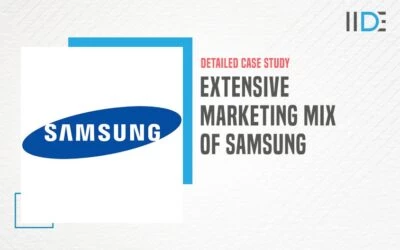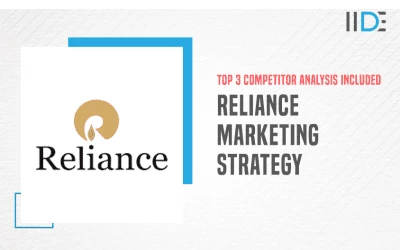In our previous case study, we looked into the SWOT Analysis of Boeing, one of the world’s leading aerospace manufacturers. In this article, we will tackle the SWOT Analysis of Airbus in-depth, its top competitor.
Airbus is a worldwide aerospace industry pioneer, with operations in commercial aeroplanes, helicopters, defence, and space. They are leading in the industry with their competent manufacturing, designing and delivery of aeroscopes.
The marketing efforts of Airbus have played an important role in the company’s position. One form of marketing that is extremely prominent and successful has moved online. If you want to stay up to date with current market trends, check out our Free MasterClass on Digital Marketing 101 taught by Karan Shah, the CEO and Founder of IIDE.
Before we dive into the SWOT Analysis of Airbus, let’s understand the company, its founding, finances, products and competitors.
About Airbus
Airbus is an international pioneer in the aerospace industry. Airbus is leading in manufacturing, designing, and delivering aerospace products, and on global scale services and solutions to customers The headquarters of Airbus are in Madrid, Spain, and Greater Toulouse, France.
Airbus is divided into three divisions Commercial Aircraft (Airbus S.A.S.), Defence and Space, and Helicopters. In terms of turbine helicopter and revenue deliveries, Airbus is the biggest industry in the world.
On the 18th December 1970 about 50 years back Airbus was founded and the founders of this corporation are Roger Beteille, Felix Kracht, Henri Ziegler, and Franz Josef Strauss.
| Founder | Roger Béteille, Felix Kracht, Henri Ziegler, Franz Josef Strauss |
|---|---|
| Year Founded | 1970 |
| Origin | Leiden, Netherlands |
| No. of Employees | 131,349 |
| Company Type | Public |
| Market Cap | € 92.19 Billion (2021) |
| Annual Revenue | € 49.91 Billion (2020) |
| Net Income | € -1.17 Billion (2020) |
Products of Airbus
Following are the products and services provided by Airbus –
- Commercial Aircrafts
- Defence and Space
- Helicopters
Competitors of Airbus
Airbus has reached the blah blah of many, however, it is not the only standing business in the industry. Following are the top competitors of Airbus –
- Boeing
- Gulfstream Aerospace
- Lockheed Martin
- General Dynamics
- Bombardier, Inc
Now that we have delved into Airbus’ core business and finance, let’s look into the SWOT Analysis of Airbus.
SWOT analysis of Airbus

1. Strengths of Airbus
- Global Reach – Airbus manufactures various design facilities in several countries, countries like Germany, the United Kingdom, France, and Spain, etc.
- Environmentally-friendly – Airbus has also launched Blue 5, which deals with environmental areas and focuses on things like saving energy, reducing waste, reducing CO2, saving water, and reducing volatile organic compounds.
- Strong R&D – Research and Development are the main factors for the company and Airbus spends billions of dollars annually in Research and Development which benefits Airbus the most. The R&D budget of Airbus in 2020 was about 2.86 billion Euros. This dedication to their products R&D shows the organisation’s commitment towards growth and technological development.
- Strategic Business Plan – Helicopters, Space & Defense, and Commercial Aircrafts are the three primary divisions that Airbus operates under. Whether it’s missiles, combat aircraft, low-cost carriers, or helicopters, the firm has consistently outperformed its competitors.
- High gross market share – When compared to its major competitor Boeing, Airbus has a greater gross market share. It had a 58 per cent market share in 2015, compared to 42 per cent for Boeing, based on the number of units sold. Its sales market share was 55 per cent, whereas Boeing’s was 45 per cent.
2. Weaknesses of Airbus
- High Manufacturing Costs – When compared to BOEING, AIRBUS has higher production costs. For example, AIRBUS’ A 380 was delayed for nearly a year, increasing total production costs and lowering the AIRBUS group’s share price by 26%.
- Problems with vital services – Several of the company’s key programmes have had issues. Its vA350s have a lot of issues. The delays are caused by cabin objects and a variety of other factors. Only 8 A320 Neos have been delivered by July 2016, compared to a projected 30+. One of its Super Puma helicopters crashed, causing problems in the company’s helicopter segment.
- A380’s popularity is waning – When Airbus first introduced the A380, it expected the superjumbo jet to be a smash hit. It also had some short-term success, but it was not as successful as Airbus had hoped in the long run. Several airlines have cancelled their A380 orders. The number of A 380s produced every month is likely to be decreased to one.
3. Opportunities for Airbus
- Technology Advancement – In the last several years, the aircraft sector has seen numerous technology innovations. This can assist AIRBUS in addressing its flaws and delivering faster results.
- Increased demand for travel – Keeping aside the 2020 pandemic, overall in recent times, there has been an increase in demand for air travel. Apart from Millenials, middle-class and professional clients also prefer air travel to other means of transportation. Over the next fifteen years, this need is likely to skyrocket.
- Stronger economic scenarios – The recession is over, and the global economy has subsequently become stronger. Globally, the state of employment has improved, resulting in increased spending on tours and travel. Another element fueling expansion in the aviation industry is the increase of the middle class.
4. Threats to Airbus
- Losing market share – Russia and China are aiming to construct their own commercial aircraft, putting AIRBUS in jeopardy. China is on track to overtake the United States as the world’s leader in air passenger traffic, and failing to participate in such a market would have a negative impact on AIRBUS’ business.
- Regulatory pressure – The regulatory burden on aircraft manufacturers and airlines has grown. Several rules and regulations, ranging from passenger safety to other difficulties, put enormous pressure on Airbus. There are financial difficulties such as the use of third parties to conclude agreements overseas, which can also make compliance difficult and stressful.
With this, we come to the conclusion of the SWOT Analysis of Airbus. In the next section, let’s briefly summarise the takeaways of this case study.
Conclusion
After the study of SWOT analysis of Airbus, we have concluded that Airbus is the world’s biggest aerospace company and still performing very well but delay in supplies, competitors, backlogs, and because of covid decline in sales are main challenges for Airbus which can create major problems for the company. Security hacking is also a major issue for Airbus, however, their strong r&d and its strategic business plan puts them in a further position compared to their market opponents.
Airbus has carved out a place for itself in the industry, and they’ve lately expanded their reach by being active on social media. Working in the marketing department of a prominent company like Airbus requires a thorough understanding of the Digital Marketing business.
IIDE’s short-term certification courses in a range of digital skills and expertise, such as social media marketing (SMM), search engine optimization (SEO), media strategy, and more, may get you up to speed in as little as five days.
If you enjoy the in-depth business SWOT analysis of Airbus, visit our IIDE Knowledge portal for more exciting case studies.
Thank you for taking the time to read this; please leave a comment below with your comments on the case study.







Thanks so much, this is just perfect for the SWOT analysis I need to do for my marketing assignment!!!